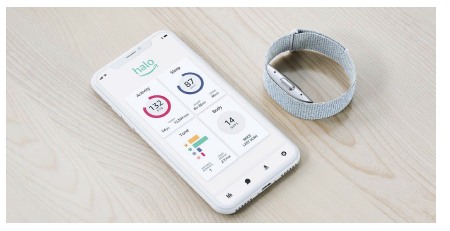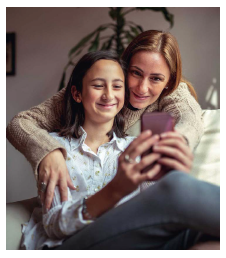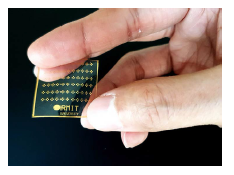Organ-on-a-Chip Transforms Drug Development
Trend Watch: Healthtech Applications Run the Gamut from Chip Technology to EHRs, to Electronic Skin and Clinical Trials
Draper’s Ex Vivo Immuno-oncology Dynamic Environment for Tumor biopsies (EVIDENT) is a microfluidic platform that maintains tumor fragment viability outside of the human body for periods of a week or more, giving cancer drug researchers the unique opportunity to study in a lab setting how immune cells dynamically interact with tumors, and how various ICI therapies enable the immune system to attack specific types of cancer. An advancement from traditional static histoculture, in which samples degrade within two or three days, EVIDENT can explore the efficacy of potential therapies on actual human tumors before the start of human clinical trials.
EVIDENT uses organ-on-a-chip technologies to support parallel testing of emerging cancer therapeutics including ICIs and combination therapies. The current configuration of the platform houses up to 12 tumor fragments contained in parallel fluidic paths, each comprising a microenvironment that supports independent experimental conditions in dynamic studies. The next-generation system currently being designed will support up to 96 parallel experiments on tumor fragments in a dynamic microenvironment.
EVIDENT replicates the body’s response to a drug by leveraging unique components, including viable tumor fragments in a 3D microenvironment, and precision-controlled flow to enable tumor perfusion and immune cell trafficking through microfluidic channels. Once precisely controlled concentrations of immune cells are delivered directly to tumors, EVIDENT uses real-time high-resolution imaging and powerful machine-learning algorithms to map and quantify tumor response data at the cellular level, including local tumor killing and penetration of immune cells into the tumor, without disrupting the process. Draper’s EVIDENT system is also an effective, powerful and unique tool for patient-specific personalized therapeutics and precision medicine. The precision and scalability of the microfluidic design enables testing of many therapeutic combinations simultaneously, so patients may begin the right treatment, right away.
~~~~~~~~~~~~~~~~~~~~~~~~~
Amazon Integrates Halo Data into Cerner EHR
 Amazon and Cerner are partnering to let patients share their Halo wearable data with providers. For example, patients can share their body fat percentage through the Cerner HealtheLife App, which will show progress toward their health goals and help inform doctors’ care decisions. San Diego-based Sharp Healthcare will be Cerner’s first health provider to integrate Halo data.
Amazon and Cerner are partnering to let patients share their Halo wearable data with providers. For example, patients can share their body fat percentage through the Cerner HealtheLife App, which will show progress toward their health goals and help inform doctors’ care decisions. San Diego-based Sharp Healthcare will be Cerner’s first health provider to integrate Halo data.
Amazon Halo uses new innovations in computer vision to let members get a highly accurate measure of their body fat percentage, from the comfort and privacy of their own home. Participating clients can allow Amazon Halo members to opt-in to a more comprehensive view of their wellness data, including sleep and activity, shared directly to Cerner Consumer Well-being technology, hosted in the secure and resilient Amazon Web Services (AWS) Cloud. Through Cerner’s Consumer Well-being offers and related Workforce Health services, companies that purchase Amazon Halo Bands can offer their employees and health plan members this connectivity as part of their wellness programs or as part of a bring-your-own-device model.
In addition, patients can also share body fat percentage with their clinical care team by connecting their Cerner HealtheLife application. This data can show progress on an individual’s goals, inform care team guidance and offer a more comprehensive view of activities that, when managed proactively, can positively influence a person’s overall health.
~~~~~~~~~~~~~~~~~~~~~~~~~
Apple Offers New Blood Oxygen Sensor
The new Apple Watch Series 6 expands the health capabilities of previous Apple Watch models with a new feature that measures the oxygen saturation of the user’s blood so they can better understand their overall fitness and wellness.
“Apple Watch Series 6 redefines what a watch can do," says Jeff Williams, Apple’s chief operating officer, in a statement. “With powerful new features, including a blood oxygen sensor and app, Apple Watch becomes even more indispensable by providing further insight into overall well-being."
Apple also has unveiled a new fitness app designed for its smartwatches, and CVS Health has signed on to offer it to select commercial Aetna and Caremark members.
The company plans to partner with the government of Singapore on a national health initiative using Apple Watch. The initiative, LumiHealth, is a personalized program to encourage healthy activity and behaviors using fitness tracking and apps. LumiHealth features challenges designed to help users sleep better, move more, eat well and live more mindfully. LumiHealth also reminds users to go for health screenings and immunizations.
Apple will sponsor three studies to validate the feature and its benefits and explore how blood oxygen levels can be used in future health applications. The company will work with researchers at Anthem and the University of California, Irvine, to examine how longitudinal measurements of blood oxygen and other physiological signals can help manage and control asthma.
~~~~~~~~~~~~~~~~~~~~~~~~~
Duke Clinical Research Institute Launches First Direct-to-Family Study to Improve Dosing and Adherence in Children and Teens with Lupus
 The Duke Clinical Research Institute launched the first direct-to-family, decentralized clinical trial to help determine the most effective dose of hydroxychloroquine, commonly known as Plaquenil, for children and teens with lupus. The iPERSONAL (Individual Patient Exposure and Response in Pediatric Lupus) study also will test whether a digital pill bottle will help children and teens remember to take their medicine.
The Duke Clinical Research Institute launched the first direct-to-family, decentralized clinical trial to help determine the most effective dose of hydroxychloroquine, commonly known as Plaquenil, for children and teens with lupus. The iPERSONAL (Individual Patient Exposure and Response in Pediatric Lupus) study also will test whether a digital pill bottle will help children and teens remember to take their medicine.
The DCRI is working with Science 37, the industry leader in decentralized clinical trials, to provide the clinical trial platform and mobile research team needed to conduct the study directly in participants’ homes. Virtual studies, like iPERSONAL, have become an increasingly important way to conduct research during the COVID-19 pandemic, and all precautions will be taken to safely conduct the study.
The iPERSONAL study will recruit 20 children and teens with lupus from the CARRA Registry to participate. The CARRA Registry is the largest established observational registry that collects clinical and patient-reported information about children and adolescents with pediatric-onset rheumatic diseases. Recruiting directly from the CARRA Registry will optimize iPERSONAL study enrollment by identifying eligible potential participants with lupus ahead of time.
iPERSONAL study participation is voluntary and will include:
Four in-home visits by a mobile research nurse over a six-month period, paired with a TeleResearch exam by a remote physician;
Biological sample collection to determine lupus disease activity and optimize hydroxychloroquine dosing;
Use of a digital pill bottle, which will provide audio and visual reminders to take medication;
Use of mobile technologies, including a Fitbit to monitor physical activity and a smartphone to enable research survey completion; and Sharing of study results with participants and the lupus community at large.
~~~~~~~~~~~~~~~~~~~~~~~~~
Electronic Skin Senses Pain, Temp, Pressure as Fast as Human Dermis
 Scientists at the RMIT University in Melbourne, Australia, have developed an artificial skin material that can sense pain, temperature, and pressure. It replicates how real skin responds to stimuli, which sends appropriate electric signals through neural pathways to the brain. The technology is slated to allow for life-like transmission of tactile sensations through prosthetic arms and legs and may even help replace skin grafts with artificial solutions.
Scientists at the RMIT University in Melbourne, Australia, have developed an artificial skin material that can sense pain, temperature, and pressure. It replicates how real skin responds to stimuli, which sends appropriate electric signals through neural pathways to the brain. The technology is slated to allow for life-like transmission of tactile sensations through prosthetic arms and legs and may even help replace skin grafts with artificial solutions.
The researchers made three separate devices, including one that senses pressure, one temperature, and one pain, though it should be possible to combine them into one. This required a new approach to stretchable electronics, using oxide materials combined with silicone to make something that can be bent and flexed and not break. A special temperature sensitive coating was developed that can quickly transform itself, something that is immediately measurable using electronics. The last necessary component was brain-like memory cells that are used to decide how to process the sensory data and send the right signals when limits are reached.
~~~~~~~~~~~~~~~~~~~~~~~~~
Smartphone App and Deep Learning Help Detect Diabetes
Researchers at UC San Francisco have created a method of detecting diabetes using a smartphone camera and deep learning, using the Instant Heart Rate app from Azumio to capture PPG measurements. When a user places his or her fingertip over the phone’s flashlight and camera, the app measures PPGs by capturing color changes in the fingertip corresponding to each heartbeat. This data is reported back to the user as the instantaneous heart rate. While more research is needed on how to best incorporate this new digital biomarker, the results could establish PPG as a new modality in diabetes care.(PV)
















